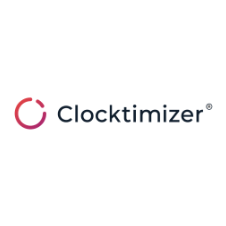Clocktimizer: Firmwide analytics and client satisfaction
As we outlined last week, we are starting a new blog series covering firmwide analytics. Having already looked at what a data governance policy actually is, we will be diving further into the topic’s practicalities. Namely, we will be looking at the sort of data your firm should be collecting, which areas it should be collecting them in, and what sort of insights it can hope to get from this data. Taken together, the blogs will provide a solid starting point for any firm looking at getting the most out of their data.
In our first installment, we will be covering data analytics and client satisfaction. We will show the relationship between data and client retention. We will also try and bust some of the data fallacies surrounding client satisfaction. Finally, we will offer a rough framework for the data analysis you can perform on your clients.
Why you need to collect client data
There is a common myth, believed by most law firms about their clients. The belief goes that getting new clients on board is essential for increasing firm revenue. However, any firm which collects in-depth analyses of client financial relationships will tell you that the real key is expanding existing client relationships. It is a topic we have covered in some depth earlier. However, put short, cross-selling to existing clients is vastly more financially beneficial for firms.
“Cross-selling by one or two practice groups can increase firm revenue as much as eight times” Clocktimizer
This sort of insight is one of many reasons why data on client satisfaction is essential. First, the comparison of client relationships can inform you about which client and type of work are best for your business. Secondly, good client data can improve existing relationships. By understanding what clients value, and measuring your ability to deliver it, you can improve client relationships and your firm’s profitability at the same time.
So what data should we be collecting?
Client data should be divided into two major categories. Comparative data, and personal data. Comparative data is data that compares clients against one another. This should cover a number of categories. Does each of your clients pay the same for specific activities? Does work take the same amount of time for each client? Are you more successful for one client than another? These sorts of questions should examine and benchmark the work you do for your clients. Identifying anomalies will also help you improve your overall service delivery. Additionally, positive outliers (i.e. clients for which you perform the best) can provide guidance for how to achieve this success across the board. After all, your service should be consistent so your first task is to identify when it is failing to achieve that.
The second category of client data is personal data. This is information unique to each client. Now this covers many essential bits of information most firms will already have. It can be data on what matters you currently have running for a client. It can be which industry they operate in and what sort of fee arrangement they have running. However, it can be more detailed than this. It can be client surveys, examining what a client values the most. Say, a prompt response to an email, or an in-depth understanding of their industry. This data can then be built into a profile for each client. By sharing this data with the appropriate people within the firm, you can ensure any point of contact understands the client’s priorities and delivers them. In turn, this will increase the consistency and attention to detail you can provide to each client.
Data collection is insufficient
As any data scientist will tell you, collecting the data is only half the battle. Presenting in such a way as to make it actionable is key. For that, you will need two things. A strategy, and some tools. First and foremost, identify the key goals for your client data collection, and try not to make them too broad. Start with something simple like, “We wish to increase revenue from existing clients by 10%”. Identify which categories of personal and comparative data will be needed to achieve this goal. Ensure that your data collection is consistent and isn’t subject to contaminations. For more information on data collection, check out our free e-book on Machine Learning.
Having collected the data, the next job is to analyse and present it in an actionable way. While a data scientist on the team is a great way to start this process, it may not be in reach of every firm. Tools like Clocktimizer can help you visualise the data in an easily digestible way. For example, Clocktimizer can identify profitability by client or by activity, per client. As a result, this can inform choices about which activities are best for the firm. It can also present cross-selling opportunities by identifying departments not currently serving your biggest clients.
Reporting is key
With client satisfaction data, one of the most essential things to ensure is that you build data collection and feedback into any point of contact with a client. Currently, partners may act as a single point of contact for a client. However, they are often supported by numerous team members. Sharing client dashboards with the team (including reporting goals and progress towards them) will improve client relationships across the board. Far too many firms have managed to collect the right data, and analysed it successfully, but have failed at the final hurdle: implementation. By ensuring that the goals and incentives are shared consistently (and victories are celebrated) you can make improvements in client satisfaction part of the DNA of your firm. After all, consistency is the mark of successful implementation.
Next week
In the next blog, we will be tackling the second, essential area in firmwide analytics: succession planning. Every firm lives in fear of either a team member leaving and taking successful clients with them or a single point of failure in firm operations. We will look at how analytics can prevent this sort of problem from occurring. We will also look at the ways you can strengthen and diversify client relationships through analytics.



